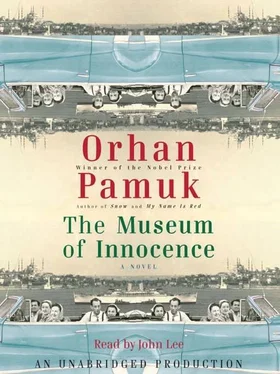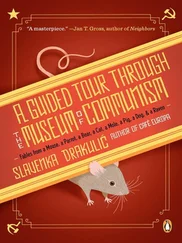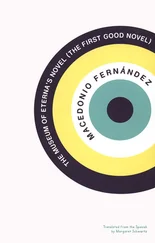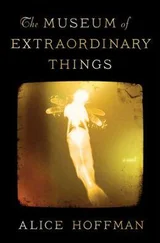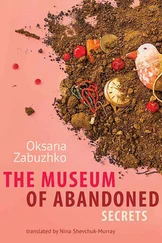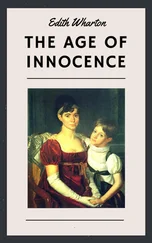“It can’t be Tahir Tan.”
We bickered for some time about Tahir Tan, as if the heart of the matter were not our using Papatya instead of Füsun in our first film together. “Let us not be ruled by emotions!” Feridun said, insisting the time had come to forget the incident at the Huzur Restaurant. Suddenly our eyes met. How much was he thinking of Füsun at that moment? I asked what the film was about.
“A rich man seduces a beautiful girl who happens to be his distant relation, and then he abandons her. The girl, having lost her virginity, takes her revenge by becoming a singer… As it happens, the songs were written for Papatya… Hayal Hayati was going to make this film, but when Papatya refused to become his slave he got angry and pulled out. The screenplay was left in the lurch. It’s a great opportunity for us.”
The screenplay, songs, and all else about this film were so bad as to be not just unsuitable for Füsun but a discredit to Feridun. Though my beauty had been sulking through every supper, bolts of lightning flashing in her eyes whenever she looked at me, I thought there might be a virtue in making Feridun happy, at least, and so before the lunch was over, encouraged by the raki , I agreed to back the film.
In May 1981 Feridun began to shoot his “ready screenplay,” called Broken Lives , after the eighty-year-old novel of the same name by Halit Ziya; but there the resemblance ended, for this tale of love and family ties in the Ottoman mansions of the Westernized bourgeoisie and the imperial elite was a world away from the screenplay set in the muddy streets and gazinos of 1970s Istanbul. Sustained only by rage and pure will, our heroine (played by Papatya, who earnestly threw herself into the part) becomes famous for the love songs she performs in the gazinos as she devotes many patient years to plotting her revenge against the man who took her virginity; unlike the heroine of the novel, she is miserable not because she is married but because she cannot marry.
We began filming in the old Peri Cinema, in those days the location favored for all films with scenes in nightclubs offering traditional music. The theater seats had been taken out and tables put in to make the place look like a gazino . The cinema’s stage was wide and deep, if not quite as large as the one at Maksim’s, the largest indoor gazino of the day, or the Çakıl Gazino, which was housed in a large tent in Yeniköy. From the 1950s through the 1970s there were many such places, modeled on French cabarets, where patrons might eat and drink while being entertained by a lineup of singers, comics, acrobats, and magicians; they featured Turkish singers with Western as well as traditional repertoires, and many musical melodramas were filmed in them. Typically it was in the gazino that the heroine would first make a florid confession of her consuming pain, and when, years later, she drew wild applause and tears from another audience, it would be understood that she had achieved victory in the gazino as well.
Feridun had explained to me the various ploys Yeşilçam used to avoid paying the extras in scenes where wealthy spectators applauded impoverished singers pouring their hearts out; in the old days, real singers like Zeki Müren and Emel Sayın would usually play themselves in such musicals, and the filmmakers would admit anyone in a jacket and tie who knew how to sit quietly and politely at a table. The gazino would be packed with people eager for a free show, in return serving free as extras. But in recent years filmmakers had begun to use lesser-known actresses like Papatya in musicals. (These young starlets would play singers much more famous than they themselves were, but after one or two films the gap between the film and real life would close, whereupon they could begin to star in films about impoverished singers much less famous than they now were. Muzaffer Bey had once told me that Turkish audiences would quickly tire of anyone who was as rich and famous in real life as represented in films; a film’s secret power derived from the discrepancy between the star’s real-life circumstances and her character in the film. The very point of the film being, after all, to show how that gap was closed.) As we could find no one willing to put on their best clothes to come to the dusty Peri Cinema and see a minor singer they’d never heard of, free kebabs were offered to any man who turned up wearing a tie and to any woman not wearing a headscarf. In the old days, whenever we were together with our friends or out on the town, Tayfun had always enjoyed making fun of the Turkish films he’d seen over the summer in garden cinemas; after mimicking the affectations and phony gestures of poor extras trying to play the rich spectators with full stomachs, he would, with the genuine pique of someone wronged, insist that rich people in Turkey were nothing like that.
Before we even began filming, I knew from Feridun’s stories of his days as an assistant that cheap extras caused problems far more serious than misrepresenting the rich. Some would try to leave once they’d finished their kebabs, while others sat at their tables reading the newspaper, or carried on joking and laughing with their fellow extras even as the singer star uttered her most affecting lines (though this last detail was at least true to life); some simply grew tired of waiting and fell asleep at their tables.
When I visited the set of Broken Lives for the first time, the set manager, his face flushed with anger, was scolding the extras for looking into the camera. For a time I was surveying the proceedings from a distance, like any film producer, when I heard Feridun shout “Action!” Then there was a flash of the crude magic-half fairy tale, half vulgarity-that you see so often in Turkish films, as Papatya stepped down the catwalk, microphone in hand, flanked on either side by the audience.
Five years earlier I had gone with Füsun and Feridun to a garden cinema near İhlamur Palace to see a film also starring Papatya, this time as a golden-hearted little girl who, being also shrewdly diplomatic, finds a way to reconcile her parents, who’d separated following a misunderstanding; now (with a speed indicating the fate of all Turkish children) she had been transformed into one of life’s angry, long-suffering victims. Papatya had slipped into the traditional role of the tragic woman-luckless and robbed of her innocence, and destined only for death-as she might slip into a dress that had been tailor-made for her. It was when I remembered Papatya’s former childish innocence that I could understand her now, just as I could recognize that childish innocence when I saw the tired, angry woman she had become. Accompanied by a nonexistent orchestra-Feridun would fill in with clips from other films-she walked through the scene with the certainty of a model, with a hopelessness that seemed almost to rebel against God, and a lust for vengeance so great that we could not but share in her grief, recognizing that, rough as she was, Papatya was a jewel. Dozing extras came back to life, and when the filming began even the waiters who had been bringing out the kebabs stopped to watch her.
In those years, every star held the microphone in a particular way meant to express their personality; that Papatya had found her own new and original way, which made her fingers look like pincers, was proof, according to one journalist I’d met at the Pelür, that she was destined for stardom. Gazinos had stopped using fixed microphones, preferring the newer ones connected to long cords that allowed singers to mingle with the audience. But this improvement presented its own problems: Though divas were able to be more expressive, enhancing the lyrics with defiant and bitter gestures, and sometimes even with real tears, they had to yank at the long cord like housewives struggling with a vacuum cleaner. In fact, Papatya was just lip-synching, and the microphone wasn’t attached to anything, but still she had to pretend that the cord kept getting stuck in order to show herself adept at managing this little difficulty with small, elegant gestures. It was the same admiring journalist who later likened these gestures to those of young girls swinging a jump rope for their friends.
Читать дальше
